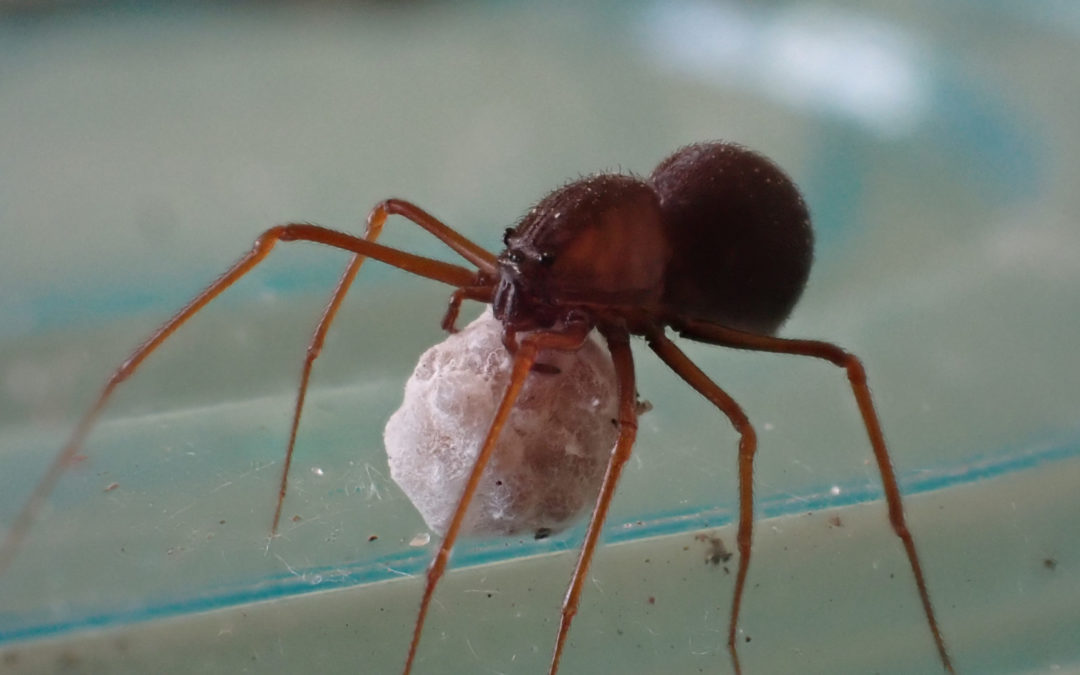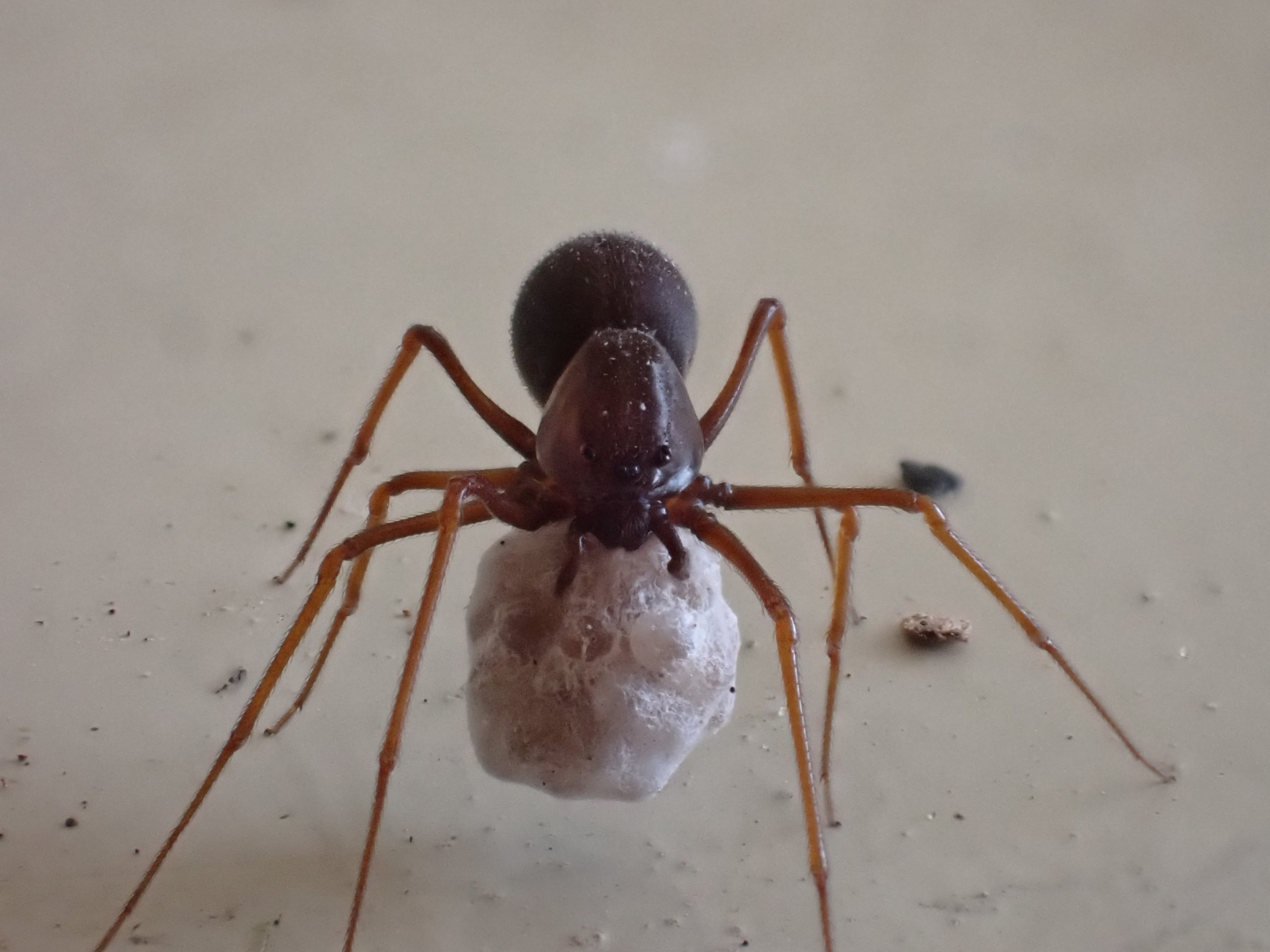Black Widow Spider
The Black Widow Spider probably takes the gold medal for worst reputation, at least in North America. There are three species of Black Widows in North America, the Northern Black Widow (Latrodectus variolus), the Western Black Widow (Latrodectus hesperus), and the Southern Black Widow (Latrodectus mactans), but today we will be focusing on the Southern Black Widow. These spiders are relatively small, with females reaching only around 1 1/2 inches in legspan, while the tiny males can be up to 4 times smaller. The females are easily recognized by their shiny black carapace and red hourglass shape on the underside of their abdomen. The males, however, look very different. They have brown and black legs and a brown cephalothorax with an orangish abdomen covered in white and red blotches and an orange hourglass shape instead of red. The males strongly resemble Brown Widow Spiders, which are related to Black Widows. Immature Black Widows have the same coloration as the males. Although they are not aggressive and only bite humans in self-defence, Black Widows have very potent venom. The venom is a fast-acting neurotoxin powerful enough to be potentially lethal to those with very weak immune systems, such as babies, or the very elderly, but rarely causes deaths among those with strong immune systems. If you believe you have been bitten by by a Black Widow, collect the spider and seek medical attention immediately. The Black Widow gets its name from the myth that the female always eats the male after mating. Although this does sometimes occur, it is not very common. Black Widows spin tangle webs, which means there is no real patten to the placement of the silk strands. When a prey item, such as a cockroach, touches these strands, the spider swiftly descends to the position of the prey and proceeds to wrap it up with sticky silk, before moving in for a killing bite. Despite their reputation as the most venomous spiders in North America, Black Widows are extremely beneficial, since they kill and eat plenty of pest insects, such as cockroaches, termites, and mosquitos. Black Widows are fascinating creatures, and should be understood and respected.






Recent Comments